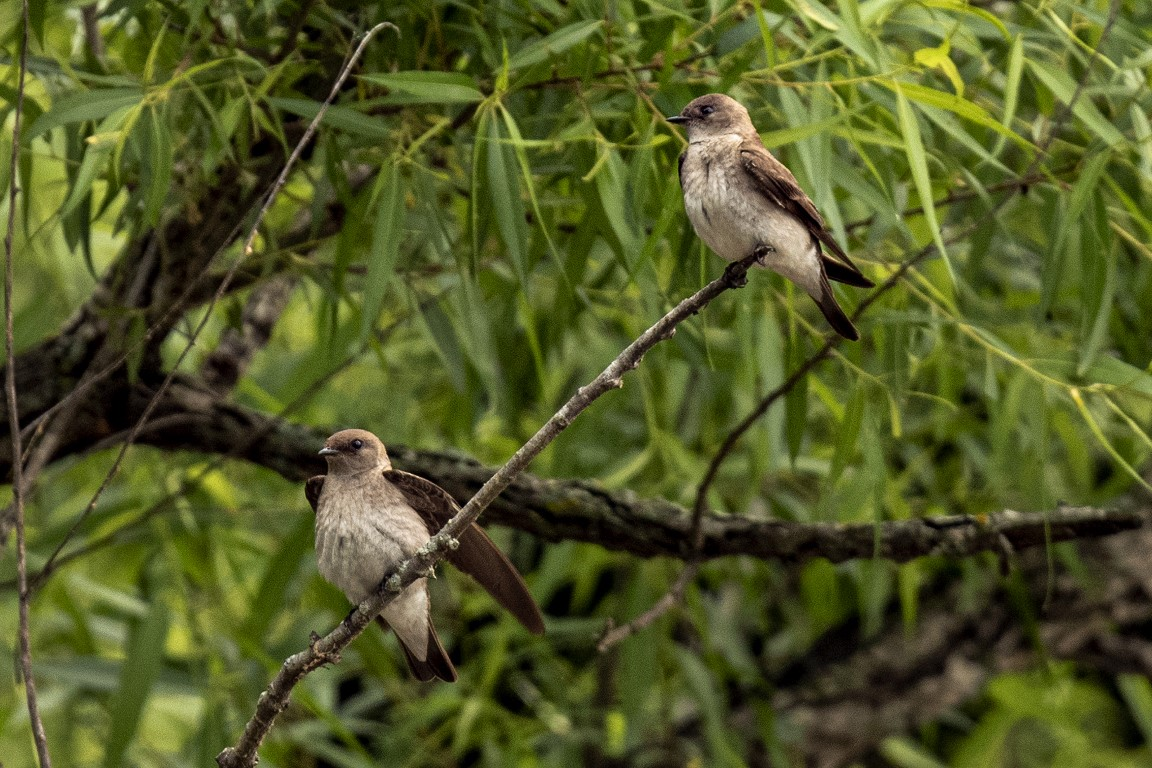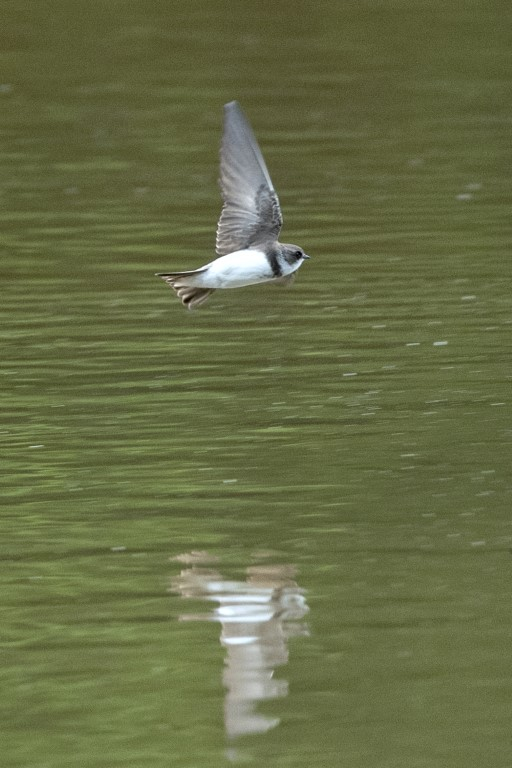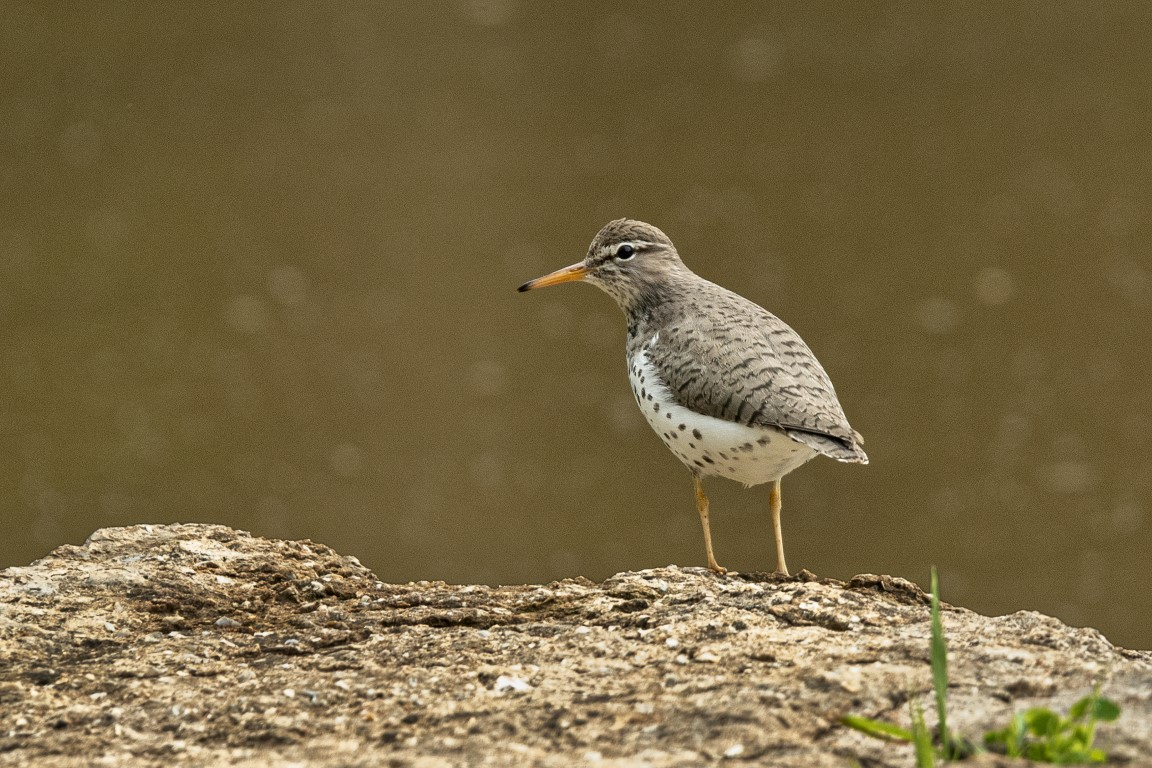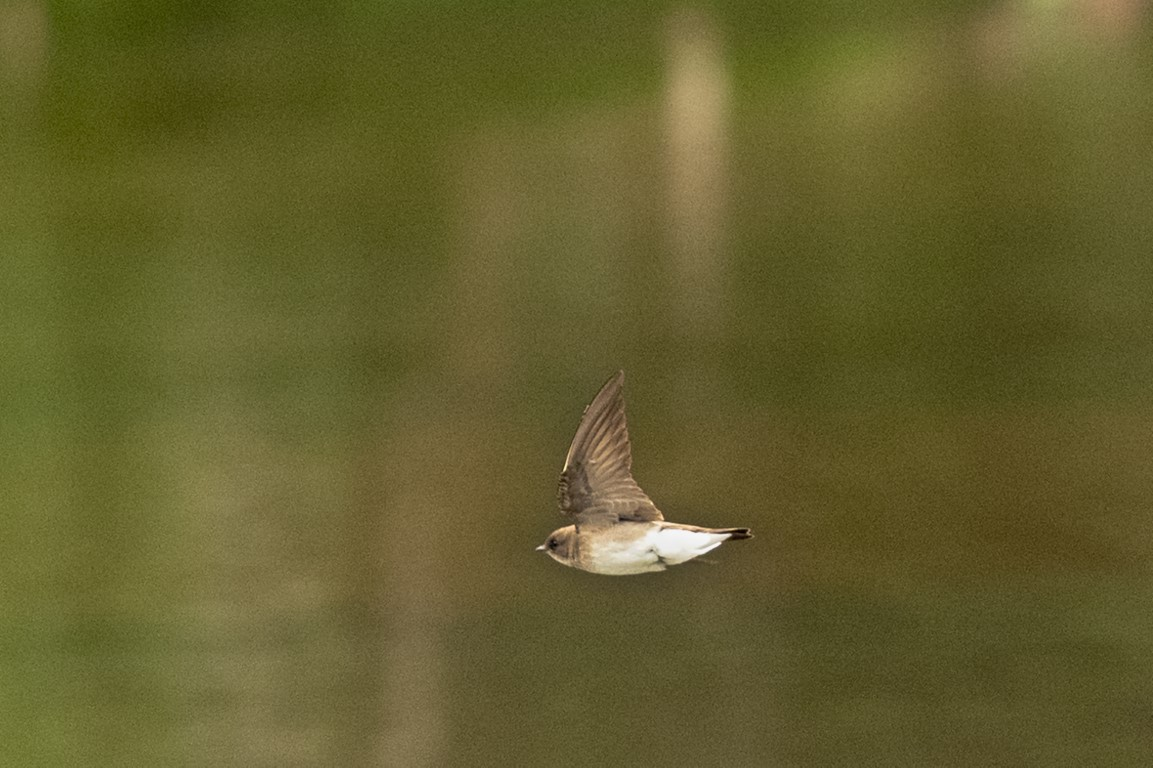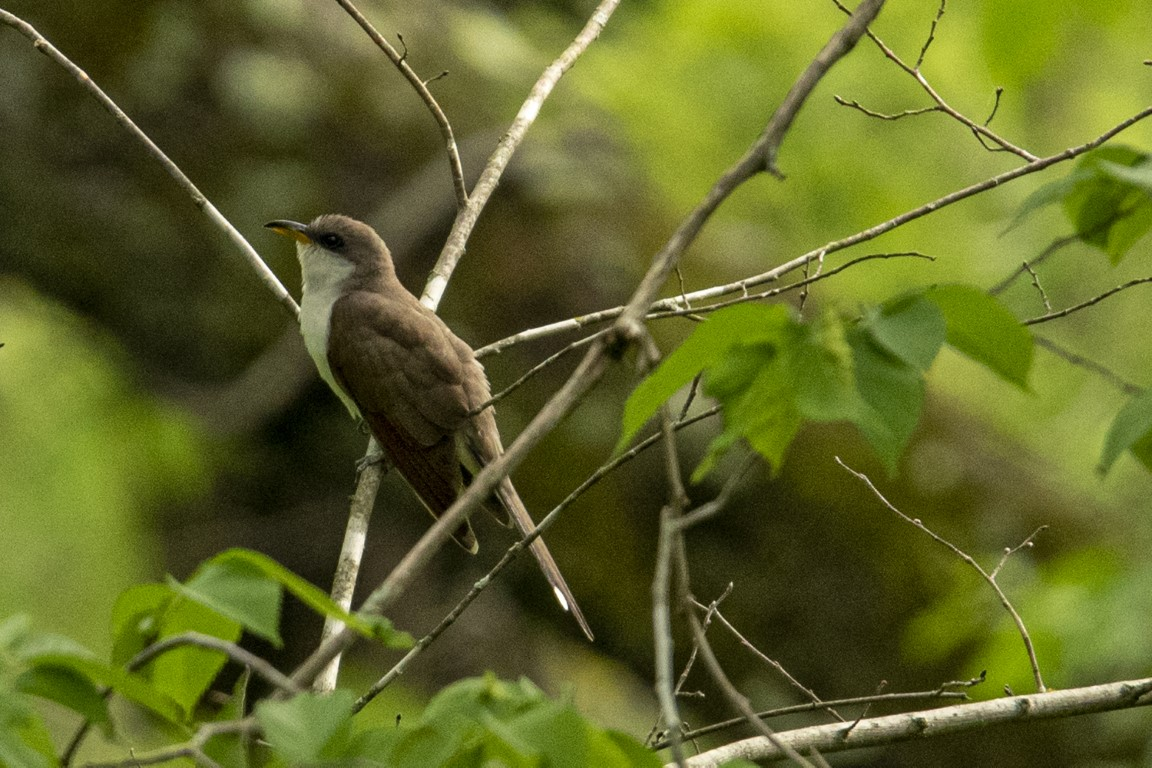The Ozarks plays host to a tremendous variety of birds. All one has to do is gaze out their window to enjoy the sight of a sparrow or robin flitting about, step outside to hear a cacophony of chirps and whistles filling the air.
But when it comes to many Springfieldians, their enjoyment of these fine feathered friends runs much deeper.
Birdwatching or “birding,” in which enthusiasts recreationally observe or identify birds in their natural habitats, has exploded in popularity across the United States, particularly over the past few years when many have been forced to stay isolated from others.
What makes watching birds such an enjoyable pastime — or, in the case of some, passion? The answers are as varied as the more than 11,000 bird species found throughout the world.
Why is birding so popular in Springfield, MO?
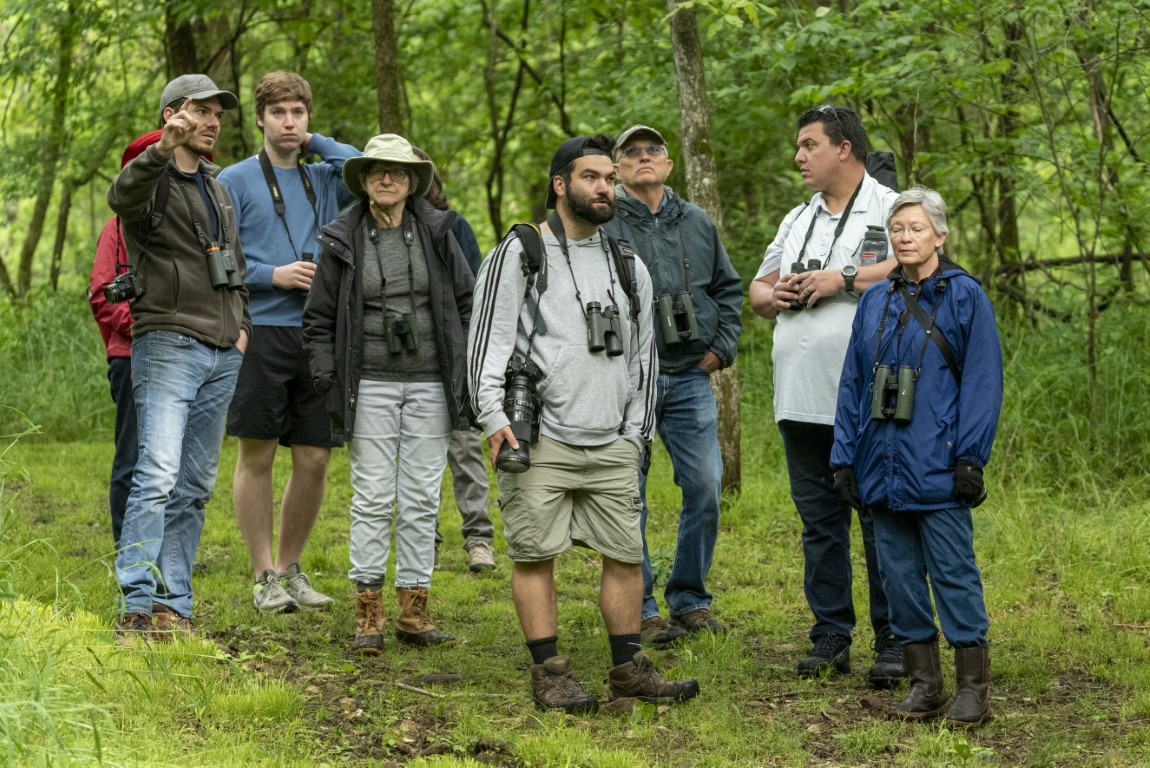
Also pictured, Jake Sauer, second from left, Ruth Grant, Austin Hess, Steve Martin, Jared Robinson, and Debbie Martin. Each is using their own observation technique to try to locate birds. (Photo by Jym Wilson)
Dr. Jay McEntee is an assistant biology professor and ornithology instructor at Missouri State University’s biology department who focuses much of his research on birds. He attributes some of the sport’s local popularity to the ease of access that Springfield provides.
“It doesn’t take far to go to be able to observe this component of wildlife,” he says. “You kind of have a connection to nature that occurs wherever you go. The diversity is substantial enough that it takes some study to learn it, and that part of it is really engaging and fun for people.”
David Catlin, a longtime member of the Greater Ozarks Audubon Society, shares McEntee’s sentiments. “Lots of them are spectacularly colorful, too, which I suppose makes birdwatching a bit like stamp-collecting. I like birds a lot more than stamps, though.”
“It’s fun to see them in migration,” says Dan Liles, public service assistant at the Springfield Conservation Nature Center and former GOAS member, “because there’s only a short amount of time that they will be in the area, so a lot of people like to see them for the thrill of adding them to their list for the year.”
The appeal extends to younger demographics as well. Kendell Loyd, described as one of Springfield’s most excellent and active young birders, stops by local parks almost daily to engage in his hobby.
“They are colorful, loud and charismatic,” he says. “In that moment, it is my peace. I walk quietly and try to blend into the environment around me. I watch closely for movement, and when I find a bird, I get to share a short moment with it as it moves past.”
‘The people are the best part of birding’

Birding works perfectly well as a solitary activity, but for many, it’s the communal experience that really makes it special.
“I enjoy birding alone,” Loyd admits. “I love the quiet, slow pace and passively observing the natural world happening around me. But when I found the local birding group within the Greater Ozarks Audubon Society, I found a family. These people love birds and conservation, but they equally love sharing their passion. Seeing an amazing bird is good, but showing someone a bird they have never seen and sharing in that excitement is the most rewarding part. There is a huge citizen science presence in birding that is unmatched by any other taxonomic group. There is community and friendly competition. As contradictory as it sounds, the people are the best part of birding. The huge diversity of friends I have gained through this hobby are lifelong. In that, birding is my family.”
“There’s kind of critical mass of people who are really interested in birds,” adds McEntee. “That kind of passion that people have for birds tends to be contagious. People feed off one another. It’s a chance to get out with people of a similar interest and enjoy something together.”
The internet has played a large role in connecting local birders as well. Even those who never meet in person can share their finds, showcasing where in Springfield and the surrounding area certain birds can be spotted, some with accompanying photographs. The website eBird.org has cataloged close to 1,500 birders in Greene County and over 300 bird species sighted from the northern tip of Valley Water Mill to the southernmost corner of Lake Springfield.
The site and its accompanying app have been utilized to such a degree, in fact, that the Missouri Department of Conservation uses the information birders provide when making conservation decisions. Taking note of local bird populations and abundance allows them to create or tweak bird conservation strategies. Not only are birders participating in an enjoyable, healthy hobby, but potentially helping bird conservation in Missouri and around the world at the same time.
Seasonality part of the appeal of birdwatching
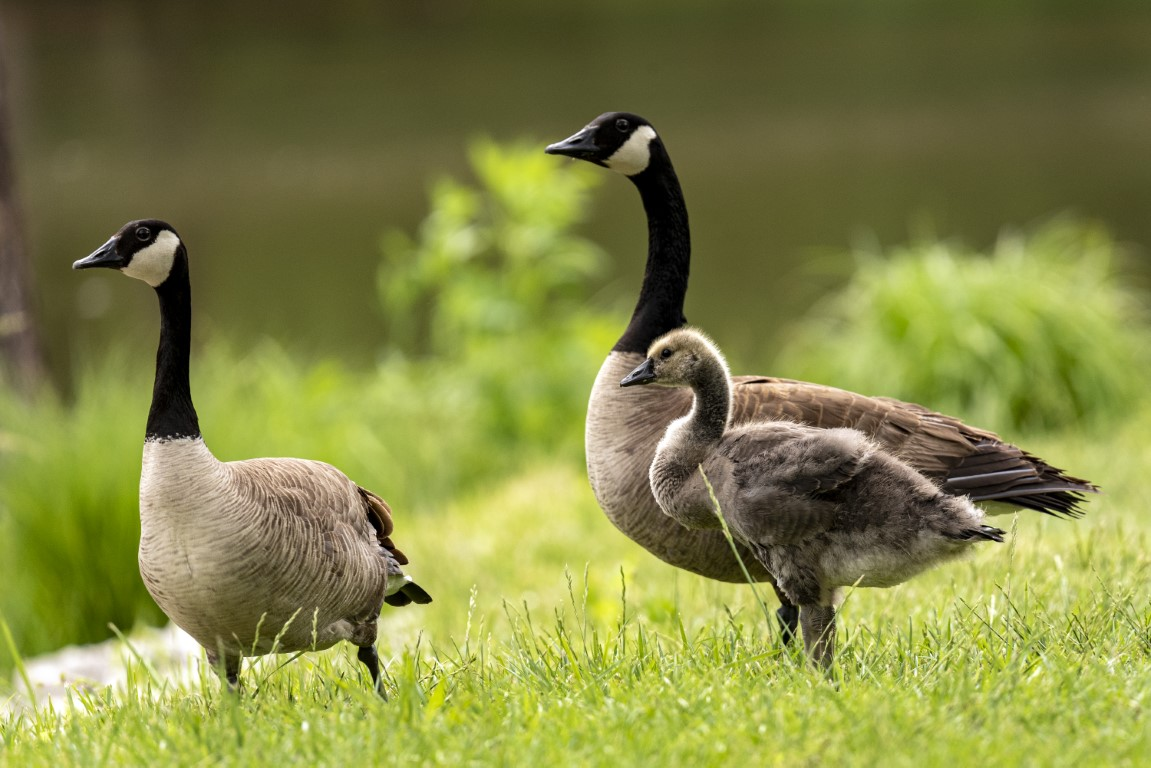
Naturally, as the seasons change, so do the birds that can be found around the area, and Missouri is in close proximity to two routes, or “flyways”, that are used by a large number of migratory birds each year.
“Some of them will go all the way up to Alaska and into Canada,” explains Liles, “so they’re here for a very short while. Then when they migrate back south, sometimes they’ll take a different flyway, so the same birds we see in the spring won’t be the same birds we see in the fall when they migrate back south.”
“There are predictable changes that occur throughout this area,” says McEntee. “Certain species show up around the same time every year. In the winter, we get a lot of ducks and geese. The winter birding shifts to a little bit different character, kind of a lower species. A lot of the waterfowl are a big appeal of going out during the winter.”
“Certainly, the seasonality of birdwatching is part of its appeal,” says Catlin. “If you are lucky enough to be in the woods when a wave of migrants comes through, it can be like watching popcorn pop. All different kinds of birds—you might see 50 or 60 species on a good morning, and more than that if you’re willing to check out a variety of habitats. Summer is a bit quieter, but we have the added bonus of watching the whole nesting and young rearing process around us. In the autumn, the migrants pass back through heading south. In winter, most of the migrants have headed on south, but we do get an influx of birds for whom Springfield is the South. That includes lots of ducks and other waterfowl that aren’t here in warmer months and occasional rarities like snowy owls or crossbills. Early migrants start showing up in March, and then the whole process begins again.”
Surprise visitors from afar
While birders appreciate the predictability that migration typically offers, sometimes nature decides to switch things up—and that’s when birding in the Ozarks gets particularly interesting.
“One of the fun and exciting things about birds is that, because they can fly, they can show up any time and any place,” says Catlin. “Birders show up from all over the state — and sometimes beyond — to track them down. We’ve had Neotropic cormorants, which ordinarily don’t live any closer than the Texas Gulf Coast, appear at Lake Springfield. Unusual hummingbirds from the West show up at local hummingbird feeders in the late fall almost every year. You just never know what to expect with birds. That’s part of the fascination of watching them. The latest oddity folks are after is something called a limpkin, which is a tropical wading bird that, in the U.S., only lives in Florida. For some reason, a bunch of them have been turning up farther north lately. I’m waiting for one to show up at Lake Springfield. If one does, it’ll definitely be news.”
Some birders, such as Loyd, will travel long distances to seek out a rare bird sighted somewhere. “This is when birding is my adventure. The anticipation of seeing something new is invigorating, and the possibility that the bird won't be there when you arrive keeps things interesting.”
Ultimately, the appeal of birding, as Loyd states, is that it can be whatever one wants it to be.
“They inhabit every ecosystem, giving me more reasons to travel,” he says. “Birds keep me close to nature. They keep me curious. They force me to only focus on what is in front of me, and they remind me that some things are not in my control, and that is okay. From birding, I have gained attention to detail, quick reflexes, pure admiration and sometimes a healthy dose of skepticism. Birds keep me humble. If I ever feel like I understand them, I see something unexplainable. Birds teach me empathy. I see human ‘development’ everywhere and I understand the price the birds will pay for our destruction of habitat. Birds led me to activism. I am active in several conservation groups because I want future generations to be able to experience the joy I am experiencing. Birding has found its way into every aspect of my life, and I truly believe I am better for it.”
Popular birding spots in Springfield, MO
The Great Missouri Birding Trail (Around 20 spots in Springfield)


